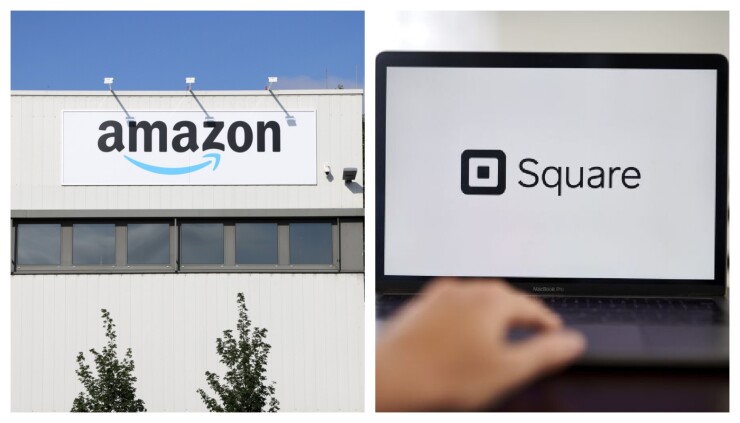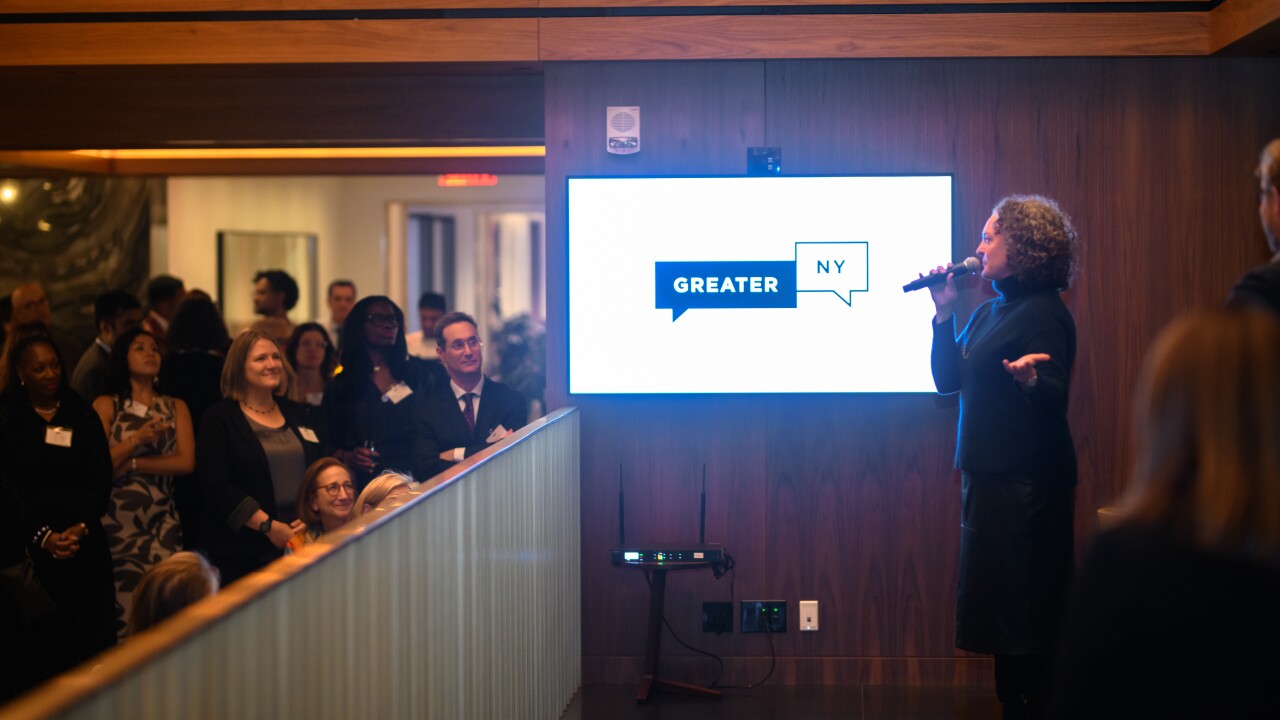Big technology firms are racing to build financial super apps, and two of them — Amazon and Square — recently have made big moves to more directly connect the point of sale and nonpayment products such as loans.
Amazon is reportedly working on a new point-of-sale project to compete with payment processing firms such as PayPal, Square and traditional bank technology firms, and last week it deployed contactless, checkout-free technology at a non-Amazon merchant for the first time. Meanwhile, Square has launched

Those moves coincide with efforts by Amazon and Square to diversify into consumer payment cards, loans and other financial services.
"When you have both consumer and merchant relationships, you can use just about any technology to create a wide variety of payment and banking-like solutions," said Rick Oglesby, president of AZ Payments Group.
Amazon has deployed Amazon One, a contactless payment and authentication system that relies on stored palm prints, at the Red Rocks Amphitheatre in Denver.
Amazon Prime has more than 200 million members globally, according to
Before the Denver deployment, Amazon's
Amazon's palm pay technology is said to be tied to Project Santos, a task force at Amazon that's working on new payment concepts. Amazon did not comment on Project Santos or the point-of-sale project, which was reported by
As an authentication tool, Amazon One can rival
By offering payment technology and lending, Amazon can offer services similar to companies that sell bank technology, such as
"If a payment company only has a consumer or a merchant appeal, its options are far more limited due to the dependencies on third parties to bring either merchant or consumers to the table with whatever technologies they have to do so," Oglesby said. "And many of these third parties have legacy technology."
PayPal and Square also offer this mix of merchant technology, payments and financial services such as lending to both consumers and merchants.
Square last week upgraded its point-of-sale technology to link it more closely to Square Cash, making a larger base of consumers more readily available to its merchant base. Square Cash, which has its roots as a peer-to-peer app, powers Square's bitcoin trading and accounts for 80% of Square's revenue. The Cash App generated $5.9 billion in 2020, a 353% jump over 2019, according to
"Square, Amazon and PayPal are trying to engage more deeply at and around the point of sale with small to medium-sized businesses, providing payment acceptance and other financial services," said Eric Grover, a principal at Intrepid Ventures, adding that by serving both business and consumers, these companies can control more of their clients' relationships.
"Where they engage, offer, see and control transactions and relationships on both sides of the network they’re stronger," Grocery said.
Square Cash is a bridge to other products at Square as the company diversifies beyond its core small-business payment hardware. Square debuted a
"Square Cash retail payments is a closed-loop payment system,” Grover said. “It should therefore generate richer transaction economics and with control of transactions and data from end-to-end, opportunities to offer promotions generating incremental sales and value for both its small businesses and consumers."
"To the extent funds stay in the system and businesses consumers use their accounts for payments, credit, equity and crypto trading, they compete with banks and other financial institutions," Grover said.





